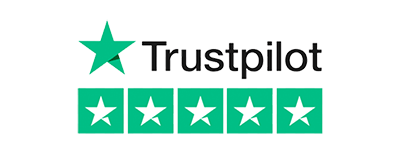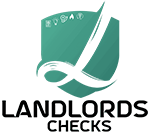Understanding PEEPs in Residential Settings What Landlords and Housing Providers Must Know
In the wake of the Grenfell Tower tragedy, the UK government has introduced stricter fire safety responsibilities for those managing...

Fire safety is crucial for all business proprietors to prioritize. In this piece, we will lead you through the vital steps for executing a proficient fire risk assessment to guarantee the safety of your establishment, workforce, and valuables. London Wide Coverage
The first step in conducting a fire risk assessment is to identify potential fire hazards within your business. This involves systematically surveying your premises to identify potential ignition sources, fuel types, and fire propagation pathways. Common fire hazards in businesses include electrical equipment, flammable materials, heating systems, cooking facilities, and smoking areas.
Electrical equipment, such as overloaded sockets or faulty wiring, can pose a significant fire risk. It is crucial to inspect and maintain electrical systems regularly to identify any potential hazards. Flammable materials, such as chemicals or combustible waste, should be stored properly to minimize the risk of fire spread.
Heating systems, including boilers or furnaces, should be regularly inspected and maintained to ensure their safe operation. Cooking facilities in restaurants or commercial kitchens often pose a high fire risk due to the presence of open flames and hot surfaces. Installing appropriate fire suppression systems, such as automatic sprinklers or fire blankets, can help mitigate these risks.
Smoking areas should be designated and equipped with proper ashtrays to prevent the improper disposal of cigarette butts. It is crucial to ensure that smoking is only allowed in designated areas to minimize the risk of accidental fires.
By conducting a thorough survey of your premises, you can identify potential fire hazards and develop effective strategies to mitigate these risks. Regular inspections and maintenance of fire safety equipment are essential to ensure their proper functioning and reliability in the event of a fire.
Assessing the Likelihood and Severity of Fire Risks
Once you have identified potential fire hazards, the next step is to assess the likelihood and severity of fire risks associated with each hazard. This involves evaluating the probability of a fire occurring and the potential impact it could have on your business, employees, and assets.
The likelihood of a fire depends on various factors, including the nature of the hazard, its proximity to ignition sources, and the effectiveness of fire prevention measures in place. For example, a flammable chemical stored in close proximity to a heat source poses a higher fire risk compared to a similar chemical stored in a well-ventilated area away from potential ignition sources.
The severity of a fire is determined by its potential consequences, such as injuries, loss of life, property damage, and operational disruptions. Assessing the severity of fire risks involves considering factors such as the presence of vulnerable occupants, the value of assets at risk, and the potential impact on business continuity.
By evaluating the likelihood and severity of fire risks, you can prioritize your fire safety efforts and allocate resources effectively. High-risk areas may require additional preventive measures, such as installing fire detection systems or implementing stricter control measures. On the other hand, low-risk areas may require basic fire safety measures to maintain an acceptable level of protection.
Developing a Fire Safety Plan
Based on the findings of your fire risk assessment, it is crucial to develop a comprehensive fire safety plan tailored to the specific needs of your business. A fire safety plan outlines the strategies, procedures, and resources required to prevent, detect, and respond to fire incidents effectively.
Your fire safety plan should include:
1. Emergency evacuation procedures: Clearly define evacuation routes, assembly points, and procedures for evacuating employees, visitors, and customers in the event of a fire. Regular drills and training sessions should be conducted to ensure everyone is familiar with the procedures.
2. Fire detection and alarm systems: Install appropriate fire detection and alarm systems, such as smoke detectors, heat detectors, or flame detectors, to provide early warning of fire incidents. These systems should be regularly inspected, tested, and maintained to ensure their proper functioning.
3. Fire suppression systems: Depending on the nature of your business, consider installing fire suppression systems, such as automatic sprinklers, fire extinguishers, or fire blankets, to control or extinguish fires. These systems should be strategically located and regularly inspected to ensure their effectiveness.
4. Fire safety equipment: Provide adequate fire safety equipment, such as fire extinguishers, fire blankets, and first aid kits, throughout your premises. Ensure that employees are trained in their proper use and maintenance.
5. Communication and coordination: Establish clear communication channels and protocols for reporting fires, conducting evacuations, and coordinating with emergency services. Designate specific individuals or teams responsible for managing fire safety.
6. Record-keeping: Maintain comprehensive records of fire risk assessments, fire safety training, inspections, and maintenance activities. These records demonstrate your commitment to fire safety and can be useful for legal compliance purposes.
By developing a well-defined fire safety plan, you can ensure that everyone within your premises is prepared to respond effectively to a fire incident. Regularly review and update the plan to incorporate changes in your business operations, personnel, or premises.
Implementing Fire Prevention Measures
Preventing fires from occurring in the first place is always the best approach to fire safety. Implementing effective fire prevention measures can significantly reduce the risk of fire incidents and minimize their potential impact. Here are some essential fire prevention measures to consider:
1. Good housekeeping: Maintain a clean and clutter-free workplace, removing any unnecessary combustible materials. Regularly dispose of waste and ensure that flammable substances are stored safely.
2. Electrical safety: Inspect and maintain electrical equipment regularly to identify and rectify any faults or hazards. Avoid overloading sockets and use appropriate fuses.
3. Heating systems: Ensure that heating systems are regularly serviced and maintained by qualified professionals. Avoid placing combustible materials near heating sources.
4. Smoking policies: Implement strict smoking policies that designate designated smoking areas equipped with proper ashtrays. Prohibit smoking in non-designated areas to prevent accidental fires.
5. Fire-resistant materials: Consider using fire-resistant materials for construction and furnishings. This can help slow down the spread of fire and provide additional time for evacuation.
6. Fire safety signage: Install clear and visible fire safety signage throughout your premises to guide employees and visitors in the event of a fire. Signage should include emergency exit signs, fire extinguisher locations, and assembly points.
By implementing these fire prevention measures, you can significantly reduce the likelihood of a fire occurring and enhance the overall fire safety of your business.
Effective fire safety requires the active participation and cooperation of all employees. It is crucial to educate and train your staff on fire safety practices, procedures, and emergency response protocols. Regular training sessions and drills should be conducted to ensure that employees are prepared to respond effectively in the event of a fire.

Thank you for fast response! and I highly recommend this company they are very professional and polite team.

Speedy, reliable service. Customer service friendly and responsive. Would recommend.

Great, Quick, and reliable service, dealt in a professional manner. Will use again

Very happy with the service next day service provided gentleman came to carry out checks for EICR was very polite and nice, Reception answered my calls and gave me satisfactory answers of my enquiries , I will use their services again and highly recommend Landlord checks

We needed the FRA done for our new building urgently. Called their customer service around 11am and they arranged someone to be on site in the evening around half 6 same day. Although we had to pay extra for getting this arranged but it was worth. Time was more important for us than the money. Received the report within 48 hours too. Saved us from a big trouble. Definitely be using them again for new projects. Thank you
Be compliant and updated with the latest safety knowledge regarding fire risk, gas safety, electrical safety and energy performance.
In the wake of the Grenfell Tower tragedy, the UK government has introduced stricter fire safety responsibilities for those managing...
In the push toward a greener and more energy-efficient Britain, the UK Government has proposed major changes to Energy Performance...
For commercial property owners and landlords in London, obtaining a valid commercial gas safety certificate is both a legal obligation and a...
As a London landlord, maintaining proper gas and electric safety checks is not optional—it's a legal requirement that protects your...
Landlords Checks Limited 1340 – Greenford Road, Greenford, UB6 0HL
Mon – Friday 08:00 – 18:00 Saturday 10:00 – 16:00
